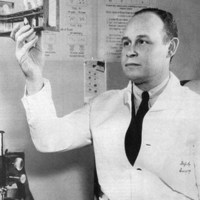5 Signs You’re Not Ready for Your CMS Part C and Part D Program Audit Now
In the complex landscape of healthcare administration, being prepared for a CMS (Centers for Medicare & Medicaid Services) Parts C and Part D Program Audit is paramount for healthcare payers. These audits are critical for ensuring compliance with federal regulations and maintaining the integrity of healthcare services. However, several indicators can suggest an organization may not be fully prepared for such scrutiny.
In this blog, we will examine five critical signs that point toward potential vulnerabilities in your CMS audit readiness.
1. Inadequate Documentation and Data Management
At the heart of audit preparedness is the meticulous management of documentation and data. This not only includes the completeness and timeliness of essential records such as contracts, policyholder information, claims, and reimbursement protocols but also extends to the adept handling of audit universes—the comprehensive datasets required for a CMS audit. Inadequate or outdated documentation compromises your organization’s ability to articulate a seamless narrative of compliance, reflecting poorly on operational diligence.
Furthermore, if a healthcare payer faces challenges in swiftly compiling, reviewing, and perfecting these critical datasets before submission, it indicates a significant gap in data management capabilities. The proficiency to promptly access, accurately assemble, and thoroughly vet documentation and data underscores its fundamental role in achieving a successful CMS audit outcome.
You must ensure that all records not only exist but are also up-to-date, accurately mirror current operations, and meet the most recent CMS guidelines, such as those outlined in:
- Medicare Managed Care Appeals & Grievances Chapter 13
- Medicare Prescription Drug Benefit Manual
- Medicare Managed Care Manual Chapter 21 – Compliance Program Guidelines and Prescription Drug Benefit Manual Chapter 9 – Compliance Program Guidelines
2. Absence of a Continuous Compliance Culture
The essence of enduring CMS audit readiness lies not merely in the presence of a compliance program but in the cultivation of a continuous compliance culture. The lack of such a culture, where compliance is not just an occasional focus but a constant and integral part of daily operations across all departments, starkly signals unpreparedness for a CMS audit.
A truly effective compliance program extends beyond structured frameworks and periodic checks; it is woven into the fabric of a health plan’s ethos, ensuring that every department not only adheres to compliance mandates but also proactively owns and champions these principles throughout the year.
This continuous compliance culture, as outlined in the CMS Compliance Program Guidance for Part C and Part D, underpins the proactive identification and mitigation of risks, fostering an environment where regulatory adherence is a shared responsibility and a perpetual endeavor, thus significantly bolstering your organization’s readiness for a CMS audit.
3. Insufficient Preparation, Practice, and Staff Training
The complexity and ever-evolving nature of CMS regulations demand not just a well-informed staff but also a rigorously prepared and practiced organization. Insufficient training, coupled with a lack of comprehensive preparation and practice, such as engaging in mock audits, reviewing CMS Best Practice Tips documents, and conducting thorough practice sessions aligned with CMS Audit Protocol guidance, signals a significant readiness gap.
Training programs must go beyond mere information dissemination to include documentation of training sessions and evidence of staff engagement and understanding. This ensures that all personnel, particularly those in compliance, appeals and grievances and claims processing roles, are not only conversant with the current regulations but are also adept at applying this knowledge in practice. Moreover, the integration of internal audits and practice webinars into the training regimen serves as a critical component in making all systems and processes audit-ready, thereby solidifying your organization’s compliance framework and readiness for a CMS audit.
4. Poor Audit History, Non-Compliance Issues, and Lack of Coordination
A track record marked by audit challenges or findings of non-compliance is a glaring red flag, signaling deeper systemic issues within an organization’s compliance framework. Such historical non-compliance can have severe repercussions, extending far beyond the immediate audit findings.
Non-compliant program audits can lead to significant financial penalties, loss of accreditation, or even legal action. Additionally, it can tarnish the organization’s reputation, eroding trust among stakeholders and potentially leading to loss of business opportunities.
However, addressing these issues requires more than just a reactive approach. It necessitates proactive measures to foster a culture of compliance, including robust communication and coordination across departments and with First-Tier, Downstream, and Related Entities (FDRs).
The absence of regular, structured forums for discussing compliance matters, sharing regulatory updates, and strategizing on responses to audit inquiries can exacerbate unpreparedness and contribute to recurring compliance failures. It’s crucial not only to dissect and understand the underlying causes of past non-compliance but also to establish robust channels for cross-departmental communication and coordination. By doing so, you can ensure that your organization not only rectifies previous shortcomings but also builds a more cohesive and responsive compliance infrastructure capable of withstanding the scrutiny of future CMS audits.
5. Lack of Audit Team Readiness and Defined Audit Scope
Navigating a CMS audit successfully hinges on having well-prepared audit teams with clear roles, responsibilities, and communication pathways, as well as a precise understanding of the audit’s scope and requirements, as noted in the CMS Program Audit Process Overview. The absence of well-defined audit teams or the lack of active compliance involvement in the audit process can significantly undermine your organization’s readiness. It is crucial for audit teams to not only be delineated but also supported by a compliance presence that provides real-time feedback and guidance throughout the audit activities. This ensures that efforts are accurately aligned with the audit’s focus areas, preventing misdirection and filling potential readiness gaps.
Moreover, uncertainty regarding the audit’s scope and the specific operational aspects under review can lead to inefficient preparation. Healthcare payers must endeavor to gain a comprehensive understanding of the audit’s breadth, the criteria for evaluation, and the requisite documentation and evidence, thereby ensuring that the preparation is targeted and effective. This dual focus on team readiness and audit scope clarity is indispensable for fostering a conducive environment for audit success, demonstrating a proactive and engaged approach to compliance and audit preparedness.
Moving Towards Audit Success: Your Next Steps
Recognizing these signs of potential unpreparedness is the first step towards fortifying your organization against the rigors of a CMS audit. If you require specialized expertise, HealthAxis is prepared to step in.
Our consulting services go beyond basic assessments, aiming to:
- Address specific gaps in your compliance infrastructure.
- Enhance your staff training programs.
- Ensure that your documentation meets the highest standards of completeness and accuracy.
Moreover, HealthAxis offers comprehensive staff augmentation services to complement your team’s capabilities seamlessly. Our experienced professionals integrate with your existing staff, providing additional support where needed to ensure readiness for the audit process.
Additionally, we provide Business Process as a Service (BPaaS) and Business Process Outsourcing (BPO) capabilities, enabling you to:
- Scale your operations efficiently and effectively.
- Maintain compliance standards.
With HealthAxis, you can transform the challenge of CMS audit readiness into an opportunity to demonstrate your commitment to compliance and operational excellence. Partner with us to achieve not just readiness but also confidence in facing your next CMS audit. Learn more about how HealthAxis can help you in your journey toward audit success.
Author:

Milonda Mitchell
Compliance Officer
HealthAxis











